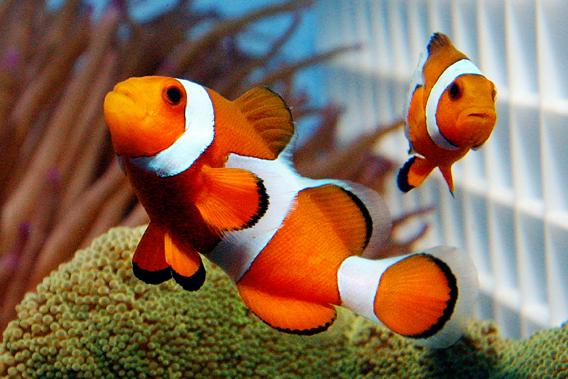The Disney film Finding Nemo lied to your kids! The people at Disney would simply argue that they altered reality to create a more entertaining storyline, but read below for the true story, and you tell me which you think is more entertaining.
How Finding Nemo started:
Father and mother clownfish are tending to their clutch of eggs at their sea anemone when the mother is eaten by a barracuda. Nemo is the only surviving egg, and he grows up in his father’s anemone before getting lost on a crazy adventure!
How Finding Nemo should have started if it were biologically accurate:
Father and mother clownfish are tending to their clutch of eggs at their sea anemone when the mother is eaten by a barracuda. Nemo hatches as an undifferentiated hermaphrodite (as all clownfish are born) while his father transforms into a female clownfish now that his female mate is dead. Since Nemo is the only other clownfish around, he becomes male and mates with his father (who is now female). Should his father die, Nemo would change into a female clownfish and mate with another male. Although a much different storyline, it still sounds like a crazy adventure!
As you can see, the first minute of Finding Nemo, outside of the talking fish part, is the only biologically accurate part of the movie. Considering that Disney demonstrated reproduction and the killing of the mother in the first minute of the movie, how did it decide that a natural sex change is outside the bubble of viewable material?
Fish reproduction is complicated, and it is especially complicated in cases like the clownfish, where species are sequential hermaphrodites. These fish are born as hermaphrodites that develop as one sex before changing to the other sex at some point in their life.
Unlike clownfish that start life as males and transform into females, there are other species, such as the California sheephead, that start as female and transform into male. These opposing forms of sequential hermaphrodites are called protandrous hermaphrodites for male-to-female changing species and protogynous hermaphrodites for those that change from female to male.
A sequential hermaphrodite life-history strategy can be extremely detrimental if harvest of fish is allowed prior to the achievement of male or female reproductive sizes. Should all males be harvested before turning into females at a certain size (or vice versa), a rapid decline would occur in the population. Understanding the triggers and sizes at which fish shift from one sex to the other greatly enhances the ability of fisheries managers to set proper length limits for long-term fish population health.
In the end, the storyline for Finding Nemo was obviously entertaining for children, but as a fisheries scientist, I must admit I find the biologically accurate storyline a bit more entertaining. With the announcement of a sequel called Finding Dory coming in 2015, Disney still has a chance to redeem itself, but I am not keeping my small “lucky” fin crossed. Which storyline do you think Disney should show in the sequel?
This article originally appeared in the Fisheries Blog. Check out the Fisheries Blog on Facebook and Twitter (@FisheriesBlog).
